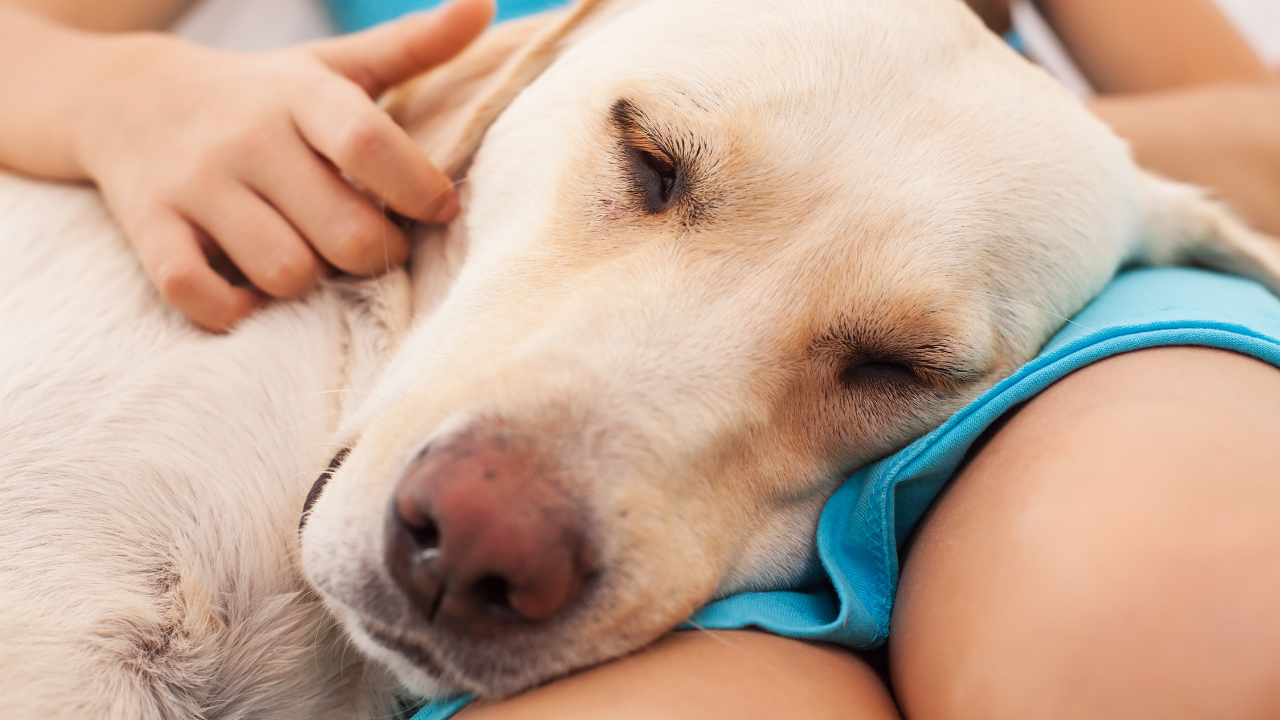So what is choice-based training...really?

by Michelle Dart
When it comes to training we are used to looking at ways to set our dogs up to succeed. We look at creating an environment that’s conducive to learning, free from unnecessary distractions, and in a location where our dog feels safe. We think about creating a training plan that is thoughtful of the needs of the individual and are careful not to work for longer than our dog is enjoying the activity. We look at body language, manage the difficulty when our dogs are struggling, raising and lowering the criteria to get successful results and celebrate when things go to plan.
On the surface reward-based training seems to tick all of the boxes - it helps to teach behaviour that we desire, strengthens the relationship between us and our dogs and seeks to avoid things that our dogs find aversive, which could have a negative impact on their wellbeing.
But does it go far enough?
Although we attempt to look at our dog’s body language to determine if they are enjoying training with us and encourage frequent breaks, but I wonder how many of our dogs, if given true choice, would opt out of training before we choose to end the session?
Training without force doesn’t mean that there isn’t coercion…
A common belief is that dogs can choose to opt out of training at any time, that they are not forced to stay and can move away if they want to. But is the choice between working with you for treats or walking away for nothing, really a fair choice?
Would you walk away from a task that gave you access to something you really wanted if the alternative was nothing? Perhaps, if you were tired, or had had enough of the thing you love but before that point you might be inclined to opt in even if you weren’t enjoying the task.
This is the case for our dogs so much of the time. Add to that the misguided advice that to train with food dogs should be hungry, or that if dogs aren’t engaging with you, you simply need higher value rewards and we have a recipe for coercion veiled beneath the guise of choice!
Ok, but why does this matter?
When we work with dogs and don’t give them a real choice to opt out, we rely on our interpretation of their behaviour and body language to give us the information we need. Sometimes dogs become frustrated, overly tired, or over aroused and this can result in undesired or even unsafe behaviours surfacing because our dog’s needs are not being met in that moment. Us trying to interpret what our dogs need at any moment is surely far less reliable than simply letting our dogs tell us?

So what can we do to give dogs real choice in training?
- Where possible create a safe space where you can work with your dog off lead. This isn’t always possible but where it is, your dog will benefit from the added freedom.
- Provide alternative options for dogs to get the same rewards you offer in training. This will ensure that your dog is working with you because they actually want the engagement. So if you’re working with food, make sure that your dog has access to free food of the same value. This can be in snuffle mats, lickimats, puzzle feeders among others, or simply scattered around the room for your dog to find.
If your dog seeks engagement with you by looking or moving towards you, begin training but if they choose to return to the free food options, stop training and let them enjoy exploring. It can take a while for dogs to get the idea that they have the choice between training and the free activities (after all our dogs often have a history of enjoying enrichment games without having the option to train with us at the same time!)
- To help build this understanding it often helps to introduce a context for training. A way that you can communicate to your dog that you’re open for training. You could use an item such as a flag or special training mat as a signal (that you only bring out in training sessions and doesn’t lie around the home at other times). Bring it out into view or place it on the ground when you are ready to train with your dog.
- This context invites your dog to let you know whether they are ready to train or not. For mat training if your dog looks or moves towards you, reward them on the mat with some of your food. This helps to build value in going to the mat and also interacting with you. You can also train other behaviours on the mat.
In time your dog will start to head to the mat to engage with you and access the food you have through training, even when free access to the same type of food is available around the room.
- A training zone, such as a mat has the benefit of enabling your dog to easily opt out of training by leaving the mat. If your dog steps away from the mat or heads to the enrichment activities, that’s ok, praise them for making a choice and let them explore.
- You can help your dog learn they can opt out by watching for any behaviour or body language signals that indicates they are getting tired, frustrated of over-aroused. Encourage them to take a break by prompting them to investigate the free food and enrichment options. Over time you will start to see your dog choosing to take themselves away when they are becoming frustrated, tired or over-excited. Dogs learning to emotionally self regulate is a brilliant benefit of introducing true choice in training!
- Also encourage your dog to take a break before you move to the next step in your training plan. This helps your dog to evaluate if they want to opt in again before you carry on.
- And if you need a break at any point you’ll want to remove your signal item/mat so you don’t miss your dog trying to engage with you! Being consistent with your signal is as important as listening to your dog's signals.
These are just some of the simple ways we can offer more meaningful choice and agency to our dogs in training. We know that giving animals agency or control over what happens to them reduces stress and increases resilience and the ability to relax. It’s also true that the perception of control in one area can foster an overall perception of control meaning that the benefits of choice in training could extend well beyond the training room.
So this is one way we can support the wellbeing of our dogs. The more we strive to do this in all areas of their lives, the more we learn what is possible when we just listen to the best teachers of all - our dogs.



